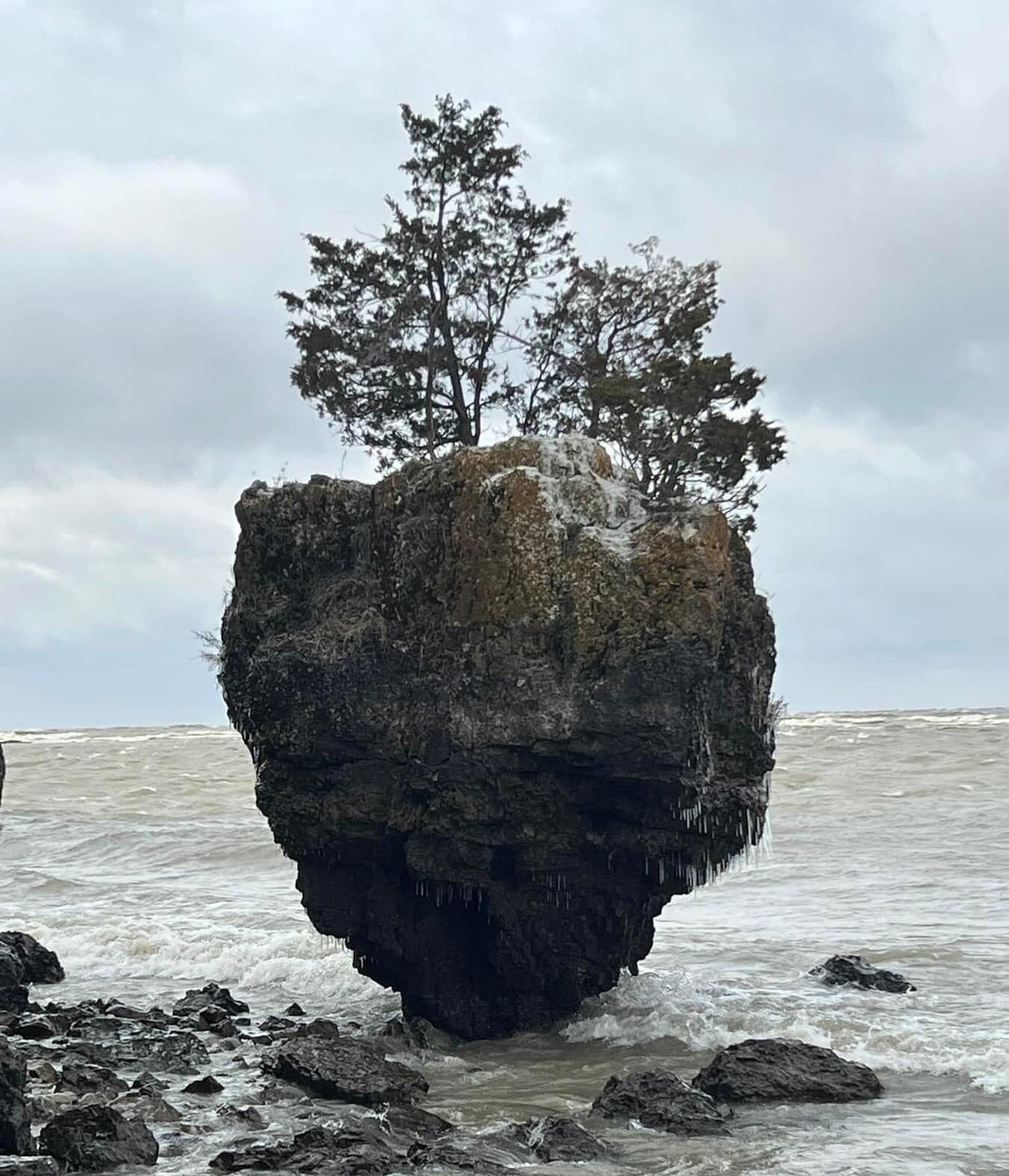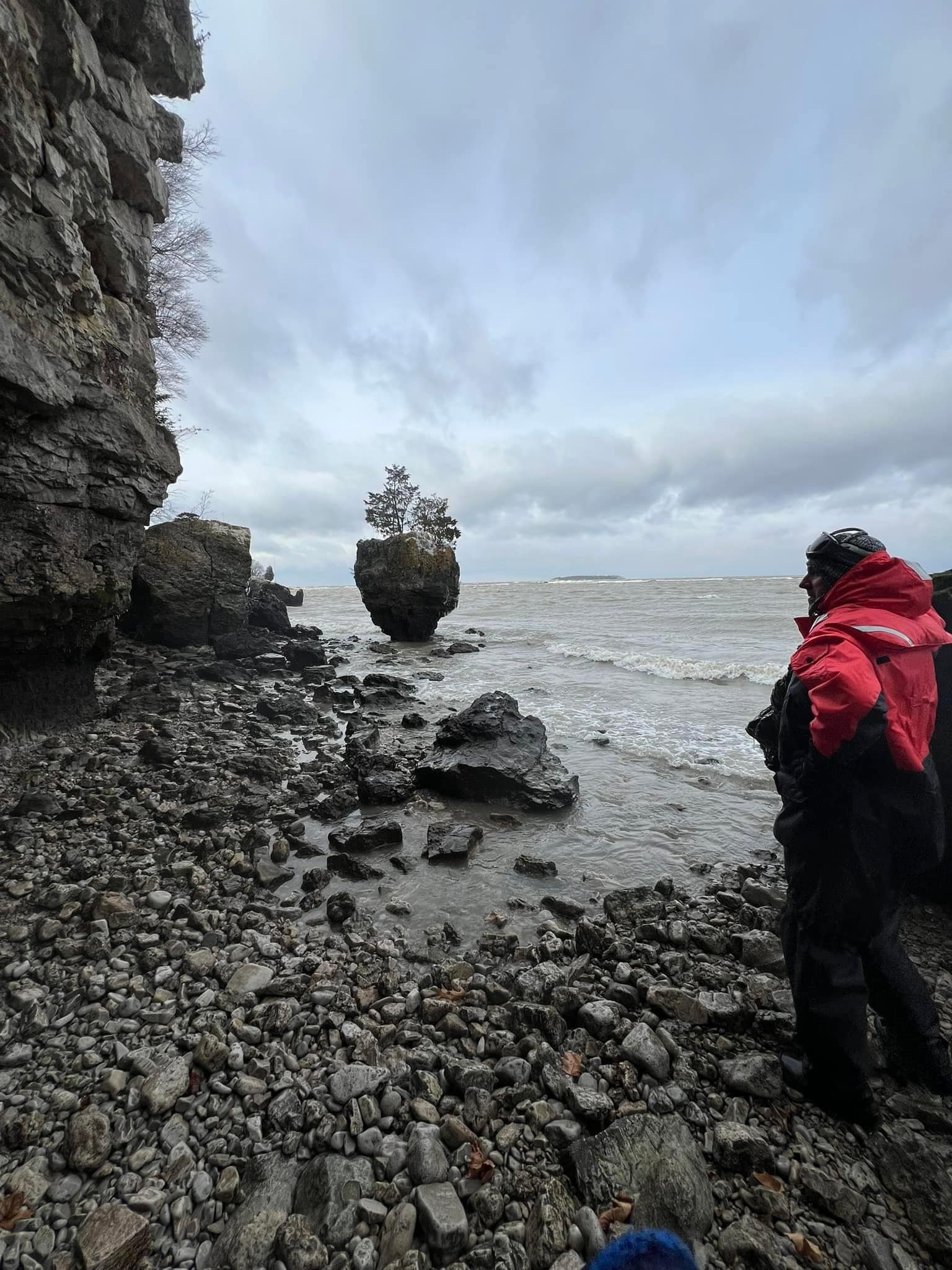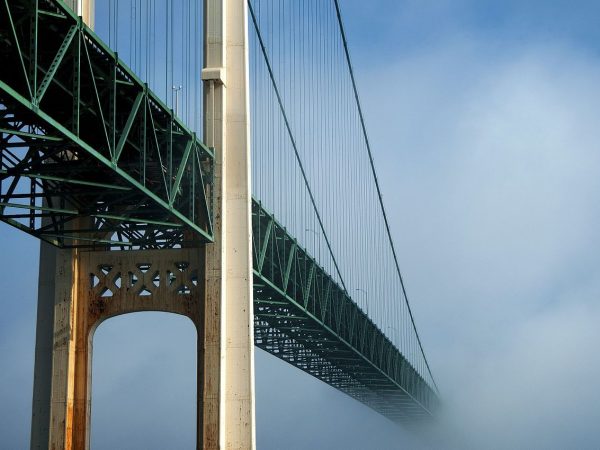
People on the western shore of Lake Erie witnessed strange sights after a winter storm came through on January 13. Parts of the lake that are usually under water were suddenly dry and visible, after wind gusts up to 55 mph pushed large volumes of water east. At least one long-lost human-made structure and striking natural features were revealed.
Put-in-Bay, Ohio resident Barry Koehler was up early Sunday morning to explore the island’s shores and discovered he could walk along a reef, normally underwater, all the way to nearby Gibraltar Island. He likened it to walking on another planet.
“There’s this whole side of Mother Nature right out your front door, but you never see because it’s under water,” said Koehler.

Pictures from Put-In-Bay at South Bass Island in Lake Erie during low water levels. (Photo courtesy of Barry Koehler)
Koehler is getting a lot of attention because of his Facebook photos from his excursion out into the reef. Especially after his images of spectacular massive boulders topped with trees went viral.
A storm just before Christmas, in 2022, had much the same effect but the water level was a couple feet lower, says Koehler. He estimates the features he photographed this past weekend would normally be 6 or 9 feet underwater.
“When the water goes out like that, very rarely does it go that low,” said Koehler. “The fact it’s happened twice in the past 13 months is striking. In 2022, I could make it across the reef but this time I had to time it by jumping in and out of the waves,” he said.
The strangely bare lakebed also revealed what may have been an old sunken barge or pier, near the James A. Haley Boardwalk in Oregon, Ohio.
On Sunday evening, a local woman emailed photos of the site to National Museum of the Great Lakes archeologist, Carrie Sowden. She determined the cylindrical objects were not a ship’s cannons, and the lack of any other curved lines suggested to Sowden that it was unlikely a shipwreck.
When Sowden visited the site early Monday, January 15, the water had reclaimed its secrets. While rare, winds that uncover Lake Erie’s bottom are not unheard of, she said.
“Plus, sand in the Great Lakes shifts all the time so there’s a lot of stuff that appears and disappears,” said Sowden.

Pictures from Put-In-Bay at South Bass Island in Lake Erie during low water levels. (Photo courtesy of Barry Koehler)
In 2002, the General Hunter was uncovered on Lake Huron off Southampton, Ontario. The ship is from the War of 1812, and took part in the Battle of Lake Erie. It survived the war only to be blown ashore in a storm, in 1816, and buried under the sand.
The National Weather Service’s (NWS) depth gauge showed the December 2022 storm caused water to drop even lower—about 40 inches below Saturday’s low, according to NWS meteorologist Rich Pollman. Neither event was out of the known range for low water levels during a storm, he said.
“A little southern component is necessary so winds are more parallel to the lake, making it like a big bathtub,” said Pollman. “But water is trying to fight back, so winds have to be sustained to at least 35 to 40 mph.”
Winds were high and sustained during both storms, and each time resulted in a seiche, according to Pollman. A seiche is a standing wave, that happens when strong winds align with rapid changes in atmospheric pressure, which then pushes water from one end of a closed body of water to the other. When the wind stops, the water rebounds to the other side of the enclosed area and continues to oscillate back and forth for hours or even days.
Catch more news at Great Lakes Now:
Coastal erosion researcher appeals for help in finding her remote-control boat
Science Says What? The weight of the world rests on a small Canadian lake
Featured image: Pictures from Put-In-Bay at South Bass Island in Lake Erie during low water levels. (Photo courtesy of Barry Koehler)




